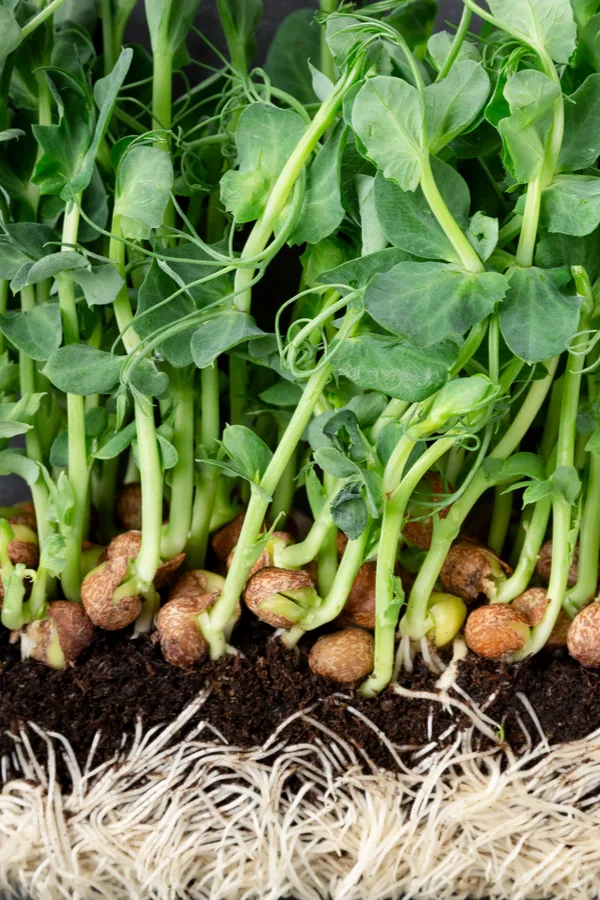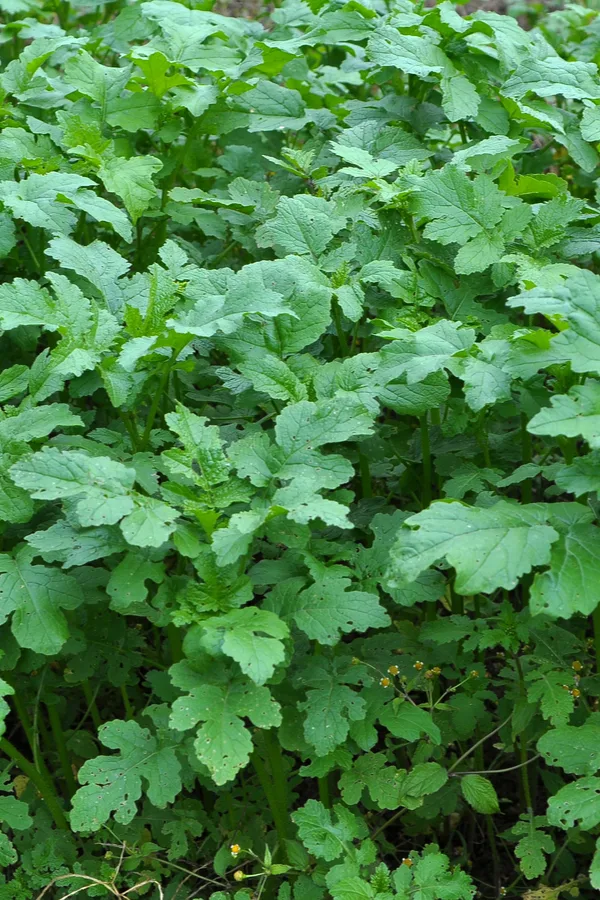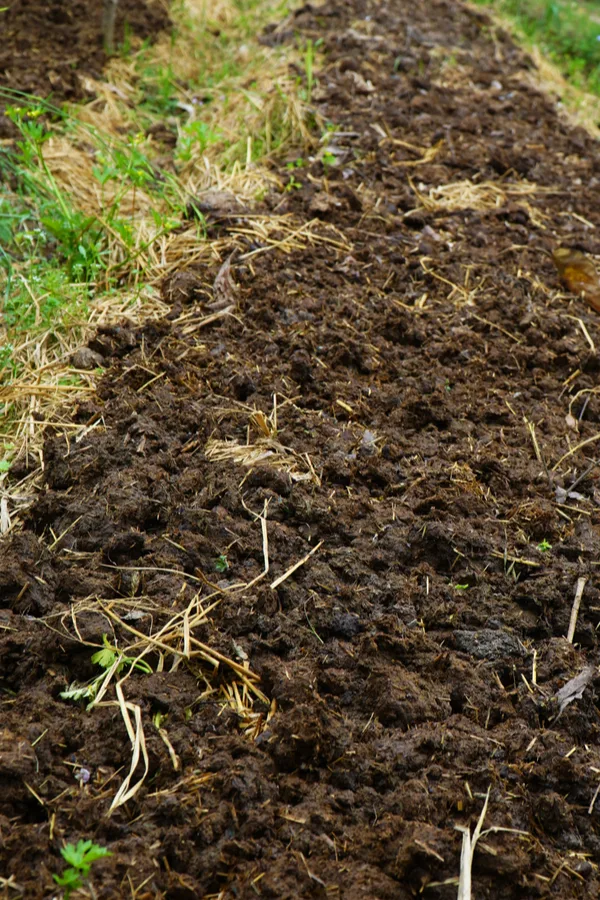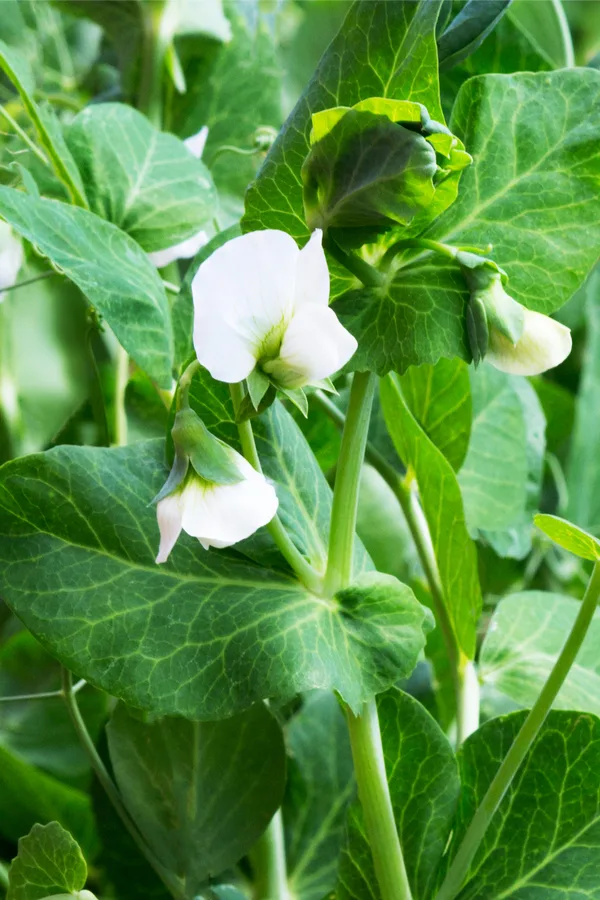If you are looking for a great way to recharge your tired garden soil before planting this year, an early spring green manure crop just might be the answer. Not only is it simple and economical, it adds serious power and nutrients to your soil. All before your garden plants go in the ground!
So what exactly is a green manure crop? Well, for starters, it has nothing at all to do with animals. Or for that matter, their manure. Instead, it’s a crop whose planting is for the sole purpose of giving its energy and nutrients right back to the soil.
Green manure crops are an excellent way to to add structure and organic matter, all while fixing nitrogen levels in the soil as well.On the surface, this process may sound very similar to the benefits of planting fall cover crops. And, to be sure, there are certainly a lot of similarities between the two.

But instead of planting the crop in the fall to protect the soil through winter, a green manure crop is planted in season to grow quickly. It is then cut down and worked into the soil while it is still green, alive, and most importantly, full of nutrients.
When this process takes place, the “green” energy from the plant provides instant nutrients into the soil. And continues to do so as the plant material breaks down over time. Here is a look at when to plant green manure crops, and how to use them to recharge your soil this spring.
Planting Green Manure Crops
When To Plant Green Manure Crops
A green manure crop can successfully go in the ground at any point during a growing season. Depending on the crop selected, the entire process can go from seed to “harvest” in as little as 4 to 6 weeks. The harvest,of course, being the moment the crop is cut down and reincorporated into the soil.
Unlike most garden crops, a green manure crop provides all of it’s resources back to the soil. Many gardeners plant these recharging crops in open spaces after harvesting spring or mid-summer crops. This allows plenty of time for fall planting in the same space.
But that fast growth and quick turnaround also makes a green manure crop perfect for planting and recharging your entire garden space in the early spring too. And what could be better than giving your soil a big boost before summer garden season!
Planting Early Spring Green Manure Crops

In most areas, there is ample time to plant a spring green manure crop before the main garden season begins. The key to success for early spring planting all begins with selecting the right crop for the job. Most notably, seeds and crops that will germinate and grow well in cool soil and cooler temperatures.
Two of the best choices for early planting are peas and clover.They both tolerate cooler soil and air temperatures well. In addition, they germinate and grow quickly, providing a quick cover in as little as 2 to 3 weeks. We’ll cover more on both of those later in the article, but for now, let’s take a look at the when, where and how of planting.
When & How To Plant Early Spring Green Manure Crops
In addition to traditional open field tilled garden spaces, manure crops can also be grown in raised bed and raised row spaces. In fact, when it comes to raised beds, they can be an easy way to recharge and add nutrients to soil that is otherwise left to fend for itself.
Green manure crops can be sown as soon as the soil thaws in your area. A few frosts, a bit of snow, or even a light freeze will not hurt crops like peas. In fact, quite often the cooler weather will spur a bit more growth.

To plant, gently rake the surface and sow your seed of choice on top. There is no need for tilling or for heavy disturbing of the soil. Rake the seed gently after sowing to settle it in, and let Mother Nature take over. There is no need to cover the seed completely.
Depending on weather and spring conditions, the crop should begin to germinate and grow within a few weeks. Within four to 6 weeks, there should be a good covering of the surface of the soil. Allow your green manure crop to grow until a few weeks before you are ready to plant your main vegetable garden.
Turning Crops Over / Mowing Crops Off
Then, simply turn the cover crop under by tilling or turning it with a spade for smaller spaces. If you are working in a no-till environment, you can mow off the crop and allow it to simply decompose on the surface soil.
Depending on what seed you have chosen, you may have to mow the crop off a few time to allow it to stop all growth. Either way, the crops nutrients are left in the soil, recharging it as they decompose.

The Best Seed For Early Spring Green Manure Crops
Although there are many great choices such as annual rye, alfalfa and hairy vetch for mid summer green manure crops, planting an early spring green manure crop requires cool weather loving crops. And as mentioned, field peas and clover and even alfalfa are big winners in that category. Here is a quick look at each along with seed links.
Field Peas
Peas are an excellent crop to grow to replenish available nitrogen in the soil. The crop is not only a cool weather survivor, it actually grows better in it! The roots are excellent at digging into the soil, and also add structure and biomass as they decompose. Simply till or dig in two weeks before planting your regular vegetable garden crops. Peas will die back after mowing a few times, making them excellent for no-till gardening too. Product Link : Dundale Pea Cover Crop Seed
Crimson Clover
A wondrous fixer of nitrogen in the soil, crimson clover is a great choice as a cover crop for those who grow tomatoes, corn and peppers. It germinates and grows thick quickly to snuff out competing weeds as well. Crimson clover is a great choice in-season as well between spring and fall plantings. Seed Link : Crimson Clover Seed
Alfalfa
Alfalfa is one of the best green manure crops around for full season use. It germinates fast, and provides a thick covering of the soil. It also tolerates cooler temperatures, making it perfect for colder climates. Alfalfa grows well in all soil types, including poor soils. It is also highly drought tolerant. Avoid planting in overly wet conditions, and never allow it to flower. If the crop grows too big, simply mow down to keep seed heads from forming. Product Seed Link : Alfalfa Seed

This Is My Garden is a website dedicated to spreading the love and knowledge of gardening around the world. We publish two new garden articles each week. This article may contain affiliate links.
